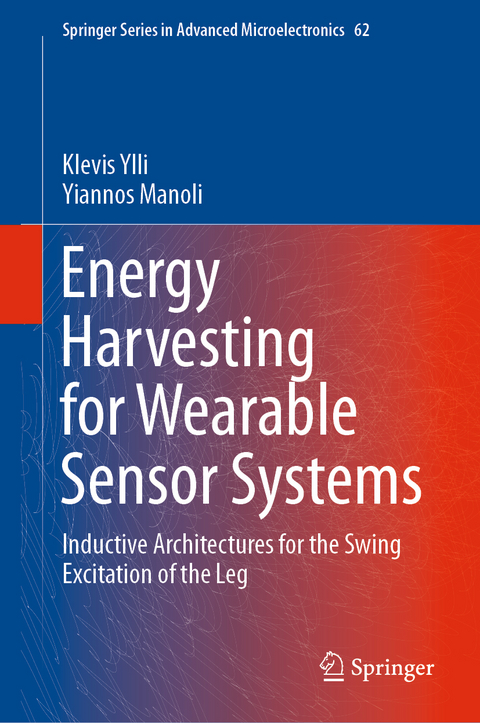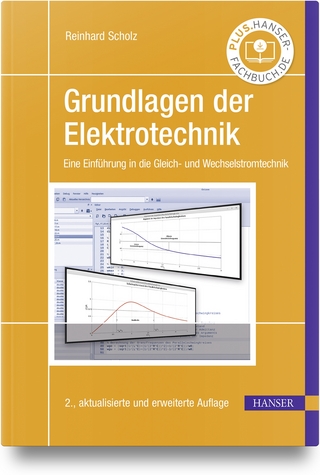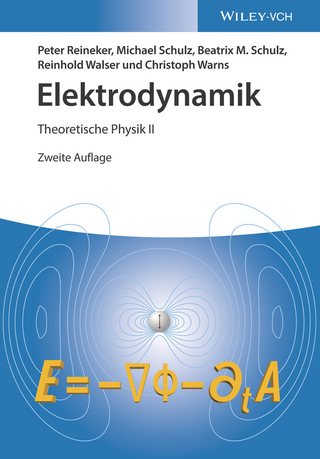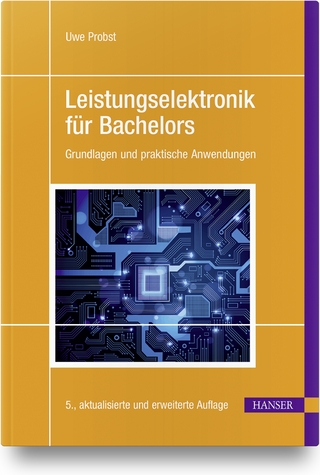
Energy Harvesting for Wearable Sensor Systems
Springer Verlag, Singapore
978-981-334-447-1 (ISBN)
Based on the simulated optimal geometry, fabricated devices achieve an average power output of up to 43 mW during walking, an amount of power that can supply modern low-power, body-worn systems.
Experiments were also carried out in industrial applications with power outputs up to 15 mW. In sum, researchers and engineers will find a step-by-step introduction to inductive harvesting and its modeling aspects for achieving optimal harvester designs in an efficient manner.
Klevis Ylli studied electrical engineering at the Karlsruhe Institute of Technology in Germany and received his B.Sc. degree in 2010. He then studied MicroElectroMechanical Systems (MEMS) at the University of Southampton in the UK and received his M.Sc. degree in 2011. After his Master studies he worked at the “Hahn-Schickard-Institut für Mikro- und Informationstechnik” in Villingen-Schwenningen, Germany where he focused on system modelling and development of inductive energy harvesting devices, in particular for energy harvesting from human motion. His scientific paper “Energy harvesting from human motion: exploiting swing and shock excitations” received the most cited paper award of the journal Smart Materials and Structures in 2015 and is featured in the journal’s 25th anniversary highlights collection. During that period he also pursued his PhD on the topic of human motion energy harvesting at the University of Freiburg in Germany, which he completed in early 2019. He currentlyworks at Endress+Hauser in Maulburg, Germany, as a project manager in industrial sensor development projects. Prof. Dr.-Ing. Yiannos Manoli, University of Freiburg and Hahn-SchickardYiannos Manoli was born in Famagusta, Cyprus, in 1954. He received the B.A. degree (summa cum laude) in physics and mathematics from Lawrence University in Appleton, WI, USA, in 1978, the M.S. degree in electrical engineering and computer science from the University of California, Berkeley, CA, USA, in 1980, both on a Fulbright scholarship, and the Dr.‑Ing. degree in electrical engineering from the Gerhard Mercator University, Duisburg, Germany, in 1987. From 1980 to 1984, he was a Research Assistant at the University of Dortmund, Dortmund, Germany, in the field of A/D and D/A converters. In 1985, he joined the newly founded Fraunhofer Institute of Microelectronic Circuits and Systems, Duisburg, Germany, where he established a design group working on mixed-signal CMOS circuits especially for monolithic integrated sensors and application specific microcontrollers. From 1996 to 2001, he held the Chair of Microelectronics as full professor with the Department of Electrical Engineering, University of Saarland, Saarbrücken, Germany. In 2001, he joined the Department of Microsystems Engineering (IMTEK) in the Faculty of Engineering, University of Freiburg, Freiburg, Germany where he established the Chair of Microelectronics. In memory of the founder of today’s Trumpf Hüttinger GmbH, this chair was endowed by the Fritz Hüttinger Foundation in 2010 and has since carried the name “Fritz Huettinger Chair of Microelectronics”. From 2008 until 2015, Professor Manoli served as Associate Dean and as Dean of the Faculty of Engineering. Since 2005, he has been one of the directors of the “Hahn-Schickard-Institut für Mikro- und Informationstechnik” in Villingen-Schwenningen and Freiburg, Germany. His current research interests are the design of low-voltage/low-power mixed-signal CMOS circuits, energy harvesting electronics, sensor read-out circuits as well as Analog-to-Digital converters. Additional research activities concentrate on motion and vibration energy transducers as well as on inertial sensors and sensor fusion. In 2000, he spent half a year on a research project with the Sensor Division of Motorola in Phoenix, AZ, USA. During a research contract with Intel Inc., Santa Clara, CA, USA in 2006, Yiannos Manoli worked on a high-resolution, wide-bandwidth accelerometer. A sabbatical leave at Columbia University in New York in 2017 has led to a creative and productive collaboration in the area of biomedical applications. He was one of the first five Fellows nominated and selected for a Fellowship at the Thomas Mann House in Pacific Palisades, Los Angeles, USA in 2018. Prof. Manoli and his group have received best paper awards at ESSCIRC 1988, 2009 and 2012, PowerMEMS 2006, MWSCAS 2007, and MSE-2007. The MSE-2007 award was granted for SpicyVOLTsim (www.imtek.de/svs), a web-based application for the animation and visualization of analog circuits for which Yiannos Manoli also received the Media Prize of the University of Freiburg in 2005. Further developments of SpicyVOLTsim were supported with a "Fellowship for Innovations in University Teaching" of the Baden-Wuerttemberg Foundation in 2011. He was the first to receive the Best Teaching Award of the Faculty of Engineering when it was introduced in 2008. For his creative contributions to an interactive teaching of microelectronics, he has also received the Excellence in Teaching Award of the University of Freiburg and the Teaching Award of the State of Baden-Württemberg, both in 2010. Professor Manoli has served as a Distinguished Lecturer of the IEEE and on the Senior Editorial Board of the IEEE Journal on Emerging and Selected Topics in Circuits and Systems” and in addition as guest editor of the IEEE Transactions on Very Large-Scale Integration (VLSI) Systems and the IEEE Journal of Solid-State Circuits. He is on the Editorial Board of the Journal of Low Power Electronics. Yiannos Manoli has served on the committees of a number of conferences such as ISSCC, ESSCIRC, IEDM and ICCD, and was Program Chair (2001) and General Chair (2002) of the IEEE International Conference on Computer Design (ICCD). He is a member of VDE, Phi Beta Kappa, Mortar Board, and a Life Fellow of the IEEE.
Abstract.- 1. Introduction.- 2. Theory and Modeling.- 3. Geometrical Parameter Optimization.- 4. Experimental Evaluation of Fabricated Architectures.- 5. Second Optimization Run.- 6. Second Generation HAC Experimental Results.- 7. Applications.- 8. Conclusion and Outlook.- A. Appendix.- B. List of Publications.- Bibliography.- Nomenclature.
| Erscheinungsdatum | 22.01.2021 |
|---|---|
| Reihe/Serie | Springer Series in Advanced Microelectronics ; 62 |
| Zusatzinfo | 55 Illustrations, color; 42 Illustrations, black and white; XXIX, 143 p. 97 illus., 55 illus. in color. |
| Verlagsort | Singapore |
| Sprache | englisch |
| Maße | 155 x 235 mm |
| Themenwelt | Naturwissenschaften ► Physik / Astronomie ► Elektrodynamik |
| Naturwissenschaften ► Physik / Astronomie ► Optik | |
| Technik ► Elektrotechnik / Energietechnik | |
| ISBN-10 | 981-334-447-4 / 9813344474 |
| ISBN-13 | 978-981-334-447-1 / 9789813344471 |
| Zustand | Neuware |
| Informationen gemäß Produktsicherheitsverordnung (GPSR) | |
| Haben Sie eine Frage zum Produkt? |
aus dem Bereich


